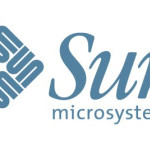- Industry: Computer
- Number of terms: 4807
- Number of blossaries: 1
- Company Profile:
Sun Microsystems is a multinational vendor of computers, computer software and hardware, and information technology services.
Uniform resource locator. A standard for writing a textual reference to an arbitrary piece of data in the World Wide Web. A URL looks like this: protocol://host/localinfo where protocol specifies a protocol for fetching the object (such as http or ftp), host specifies the Internet name of the targeted host, and localinfo is a string (often a file name) passed to the protocol handler on the remote host.
Industry:Computer
A version of RMI implemented to use the CORBA IIOP protocol. RMI over IIOP provides interoperability with CORBA objects implemented in any language if all the remote interfaces are originally defined as RMI interfaces.
Industry:Computer
Uniform resource identifier. A globally unique identifier for an abstract or physical resource. A URL is a kind of URI that specifies the retrieval protocol (http or https for Web applications) and physical location of a resource (host name and host-relative path). A URN is another type of URI.
Industry:Computer
To verify the identity of a user, device, or other entity in a computer system, often a prerequisite to allowing access to resources in a system. Based on definition found at search Database.com see http://searchdatabase.techtarget.com
Industry:Computer
Threads use a spin lock to test a lock variable over and over until some other task releases the lock. That is, the waiting thread spins on the lock until the lock is cleared. Then, the waiting thread sets the lock while inside the critical region. After work in the critical region is complete, the thread clears the spin lock so another thread can enter the critical region. The difference between a spin lock and a mutex is that an attempt to get a mutex held by someone else will block and release the LWP; a spin lock does not release the LWP. See also mutex lock.
Industry:Computer
This computer model specifies what happens to data, and ignores instruction order. That is, computations move forward by nature of availability of data values instead of the availability of instructions. See also control flow model, demand-driven dataflow.
Industry:Computer
